Black Bottom
While there were Black neighborhoods scattered throughout the city, 85 percent of Black Detroiters lived in Black Bottom, a neighborhood on Detroit’s lower east side. Although the neighborhood was profoundly poor and often considered a “slum,” it was also a site of profound culture and community. Helen Nuttal Brown, a woman who lived in the area captured this dynamic, saying, “Black Bottom was an area very near to the downtown section but very far removed in terms of being isolated economically and geographically. It was home to me; it was a safe place.”
Although it bordered downtown, Black Bottom was geographically and economically isolated due to the realities of racism and racial segregation. Originally settled by European immigrants, the neighborhood became Black during the beginning of the great migration and the city’s Black population boom in 1916. With European immigrants moving into neighborhoods further from downtown, Black migrants settled into homes built by Europeans in the 1860s and 70s, some of the city’s oldest housing.
Prevented from living in most other neighborhoods in the city by racist customs and restrictive covenants, Black Detroiters were subjected to inhumane living conditions, often the result of neglect from the city and the old age of buildings. Many houses lacked indoor plumbing as late as the 1940s and federal housing officials classified over two-thirds of the neighborhood as “substandard,” meaning they lacked electricity, hot water, toilets, needed major repairs, or were overcrowded. Because the city only picked up trash once a week, the overcrowded nature of Black Bottom meant that trash was often strewn throughout alleys and the neighborhood more generally. With so much garbage in the streets, rats were common as were rat bites. In 1951 and 1952 alone, 206 rat bites were reported in Black Bottom.
Because migration resulted in an incredible demand for housing, landlords charged outrageous rents for horrible apartments. The Urban League reported that one Black Bottom apartment renting over a store for $50 a month ($984 in 2018) required residents to climb a ladder then cross a roof to enter their apartment. Forced to pay these high rents because Black Detroiters could not live elsewhere, multiple families often pooled their incomes together to make rent, further overcrowding the neighborhood.
Despite these conditions—and partially because of them, Black Detroiters built a strong Black community in Black Bottom and Paradise Valley, the nickname of its business district centered along Hastings Street.
The Second Baptist Church and Bethel African Methodist Episcopal Church were both located in Black Bottom and each contributed to a strong community of Black self-reliance. Each church had programs to assist new residents acclimate to city life and Bethel Baptist Church created the Booker T. Washington Trade Association and the Housewives League of Detroit. Together, these two institutions supported and promoted the development of Black businesses in Black Bottom. By 1933, sixty-eight Black owned businesses existed in Black Bottom. In combination with the Urban League, the Black Bottom institutions found Black Detroiters jobs, places to live, sources of recreation, and even burial and life insurance.
Black Bottom and Paradise Valley was also home to one of the greatest jazz scenes in the world. In Paradise Valley’s seventeen nightclubs world famous entertainers and singers like Dinah Washington, Ella Fitzgerald, Billie Holliday, Pearl Bailey, Ethel Waters, Earl Hines, and the Inkspots were all regulars. Entertainers often stayed in Black Bottom’s exquisite hotels like the Biltmore on St. Antoine or the Gotham Hotel.
As a neighborhood with tremendous nightlife, Black bottom was also home to drugs and many other illegal activities. According to historian Jeremy Miller, by 1925 there were more than 20,000 gambling houses, brothels, illegal bars, and social clubs. Coleman A. Young, Detroit’s first Black mayor, recalled that during the Great Depression, Paradise Valley had “all manner of illicit backroom sin” during a “period of enthusiastic debauchery in which nothing on the street was what it seemed to be.” Even in the 1940s, a night in Paradise Valley was filled with unexpected swings. As Dorothy Elizabeth Lawson remembered, “We used to go to the bars down there in Black Bottom and have sing-alongs. Everybody would come. Before you knew it, the whole bar was singing. Those were friendly times. And people fought, but they fought with their fists. They would have a knockdown, drag out fight, and in ten minutes they would be drinking out of the same bottle.”
Due to neglect from the city, the homes of Black Bottom and Paradise Valley continued to deteriorate throughout the first half of the twentieth century. Consequently, the neighborhood became an even worse slum than it was when the Black population exploded during the great migration and was slated for slum clearance when urban renewal began in the 1950s. Despite remaining the cultural center of the Black community, the city made plans to clear it in 1945 and all its business were wiped out, as was Black Detroit’s historic sense of community on the lower east side when construction of Interstate 375 began in 1956.
Sources:
Elaine Latzman Moon, Unsung Heroes, Untold Tales: An Oral History of Detroit’s African American Community, 1918-1967, Detroit, Wayne State University Press, 1994
Thomas Sugrue, The Origins of the Urban Crisis, Princeton University Press, Princeton, NJ, 2005
Richard Walter Thomas, Life for Us is What We Make it: Building Black Community in Detroit, 1915-1945, Bloomington, University of Indiana Press, 1992
Jeremy Williams, Detroit: The Black Bottom Community, Charleston, SC, Arcadia Publishing, 2009
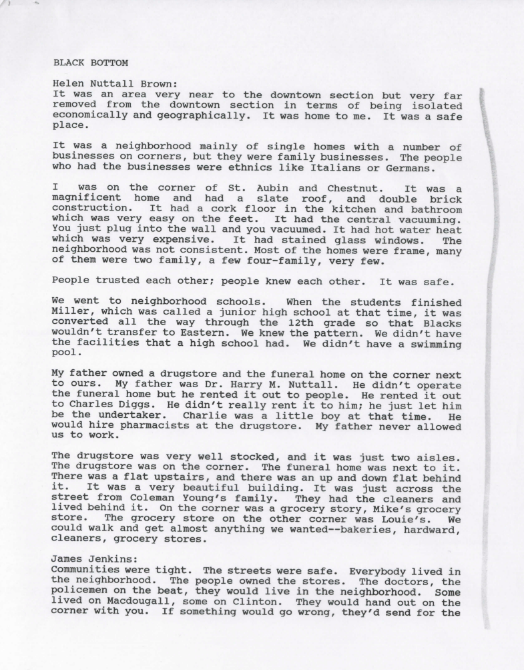
A compilation of clips from oral history interviews with Helen Nuttal Brown, James Jenkins, and Gwendolyn Edwards describing daily life in Paradise Valley and Black Bottom. –Credit: Walter P. Reuther Library, Archives of Labor and Urban Affairs, Wayne State University.
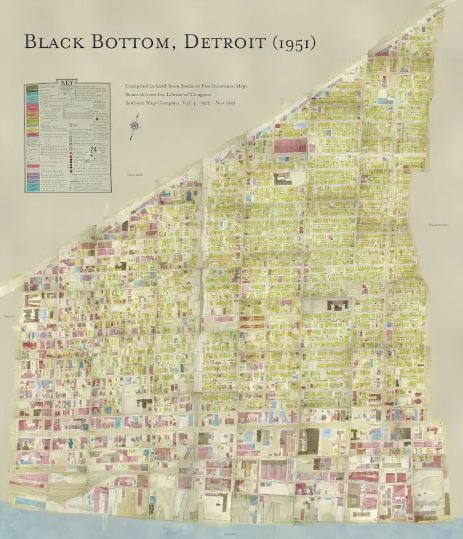
This map shows Black Bottom as it stood in 1951. Visit Black Bottom Archives for an interactive map and digital archive of Black Bottom. Credit: Black Bottom Street View/Black Bottom Archives.
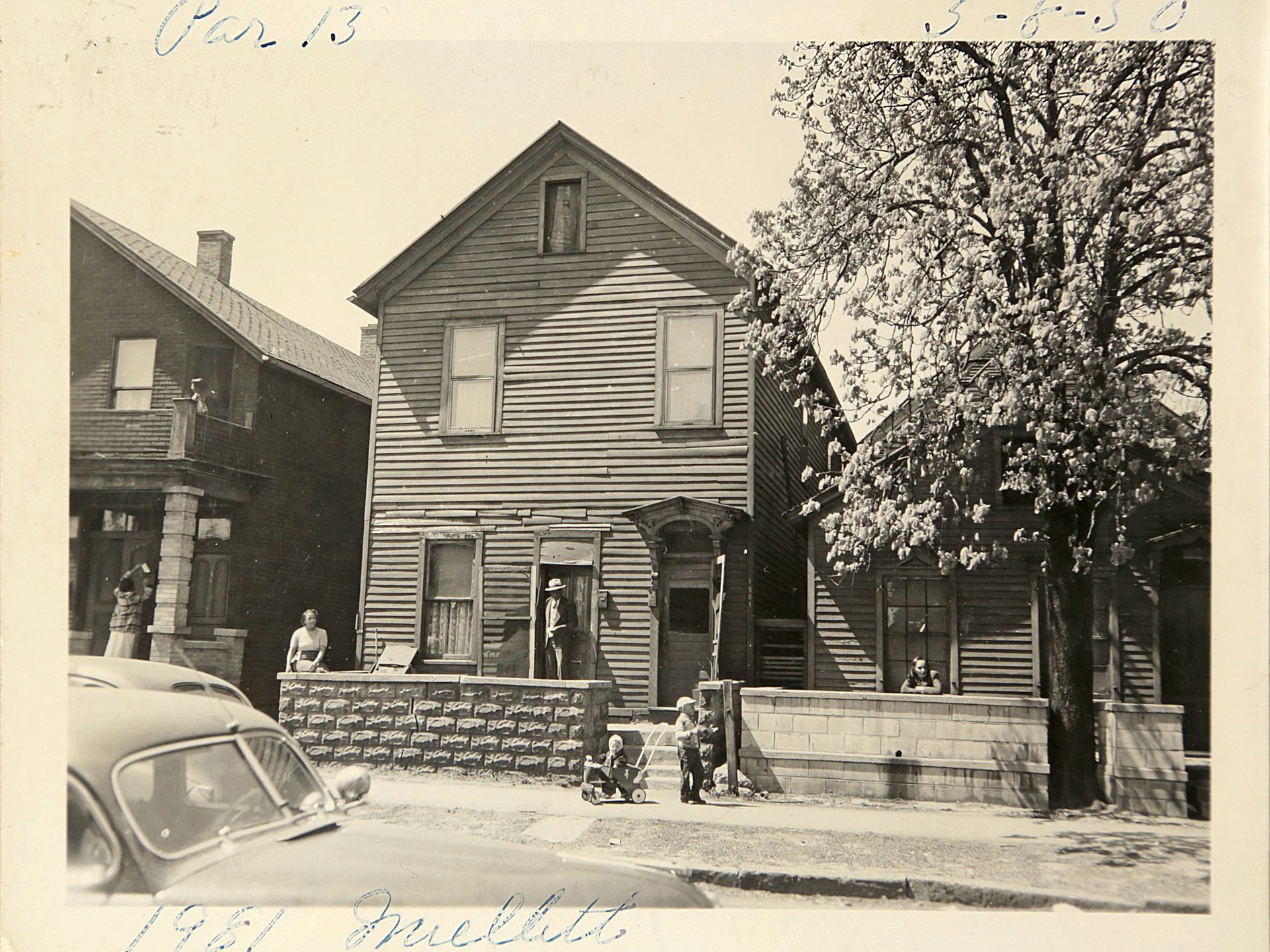
Neighbors on Mullet St. gather on their front porches in Black Bottom in 1950. –Credit: Burton Historical Collection, Detroit Public Library
Clips from 2018 interviews with Elliott Hall and JoAnn Watson, in which they discuss the rich history of Black-owned businesses in Detroit. –Videography: 248 Pencils
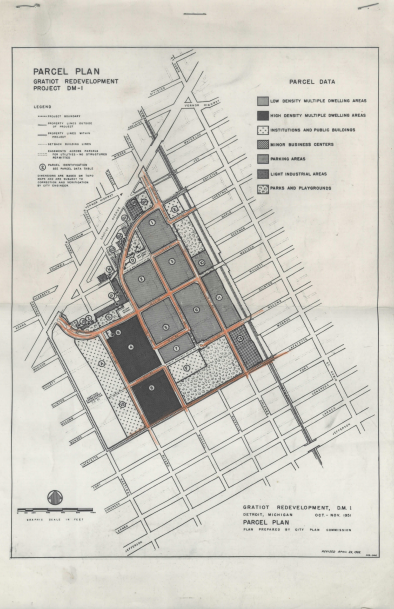
This map created by the City Plan Commission details the planning of Lafayette Park, the housing development built on the land that formerly held Black Bottom. –Credit: Walter P. Reuther Library, Archives of Labor and Urban Affairs, Wayne State University.
Explore The Archives
Watch this short documentary, “The Rise and Fall of Detroit’s Black Bottom,” to learn more about the city’s iconic Black Bottom neighborhood before most of it was leveled for urban renewal and highway projects. —Credit: City of Detroit
Clip from a 2018 interview with veteran organizer Helen Moore, in which she shares her memories of Detroit’s Black Bottom neighborhood. –Videography: 248 Pencils
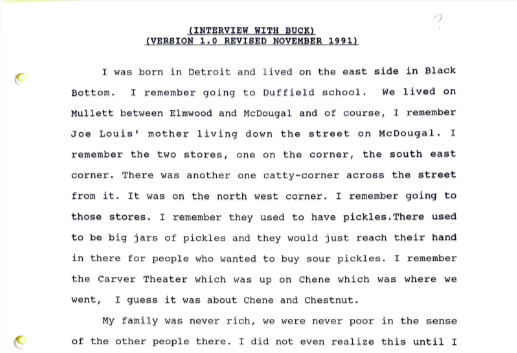
Oral history interview with former Black Bottom resident Beatrice “Bea” Buck, conducted by Elaine Latzman Moon in 1991. Buck discusses growing up and working in the entertainment industry in Black Bottom. –Credit: Walter P. Reuther Library, Archives of Labor and Urban Affairs, Wayne State University
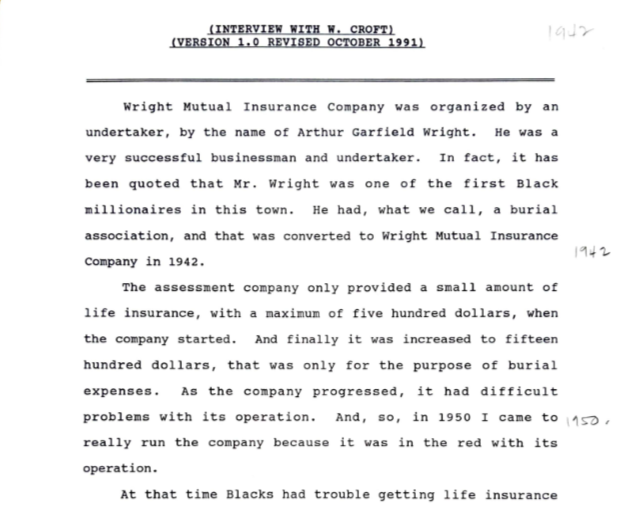
Oral history interview with Wright Mutual Insurance Co. CEO Wardell Croft, conducted by Elaine Latzman Moon in 1990. Croft discusses Black businesses in Detroit in the 1940s-50s. –Credit: Walter P. Reuther Library, Archives of Labor and Urban Affairs, Wayne State University
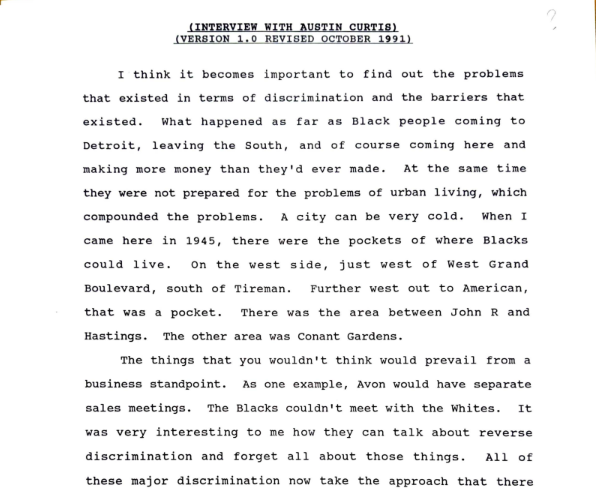
Oral history interview with scientist Austin Curtis, conducted by Elaine Latzman Moon in 1991. Curtis discusses racism, segregation, and Black businesses in Detroit. –Credit: Walter P. Reuther Library, Archives of Labor and Urban Affairs, Wayne State University
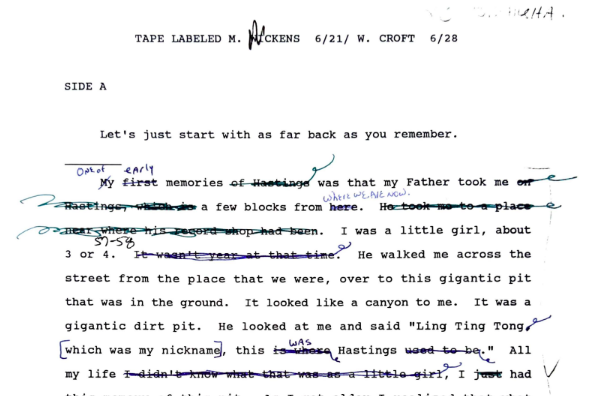
Oral history interview with Detroit artist Marsha Mickens, conducted by Elaine Latzman Moon sometime between 1989-1994. Mickens discusses growing up in Detroit and her father’s music business. –Credit: Walter P. Reuther Library, Archives of Labor and Urban Affairs, Wayne State University
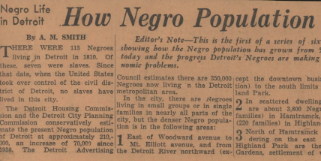
This news article published in the 1940s examines the growth of Detroit’s Black population and identifies predominant Black communities in the city. –Credit: Walter P. Reuther Library, Archives of Labor and Urban Affairs, Wayne State University.
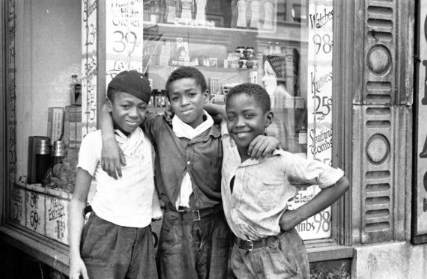
A group of children pose in front of a store in Detroit’s Black Bottom neighborhood. For more portraits from Black Bottom, see the Edward Stanton Collection: http://reuther.wayne.edu/image/tid/1983 –Credit: Walter P. Reuther Library, Archives of Labor and Urban Affairs, Wayne State University
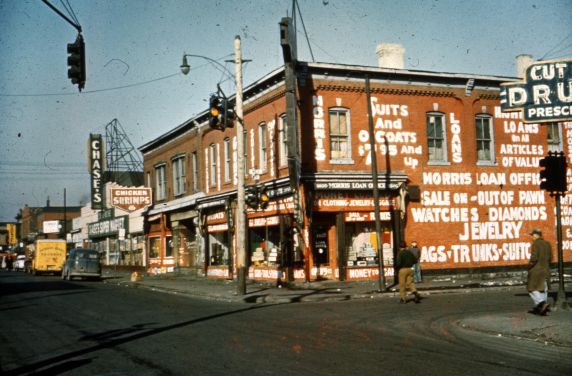
A street view of retail stores along Hastings Street at the intersection of Mack Ave. This neighborhood was later destroyed to build the Detroit Medical Center. For more streetscapes of Black Bottom and Paradise Valley in the 1950s-60s, see the collection “Streetscapes and Storefronts: City Life in 1960’s Detroit”: http://reuther.wayne.edu/image/tid/1720 –Credit: Walter P. Reuther Library, Archives of Labor and Urban Affairs, Wayne State University
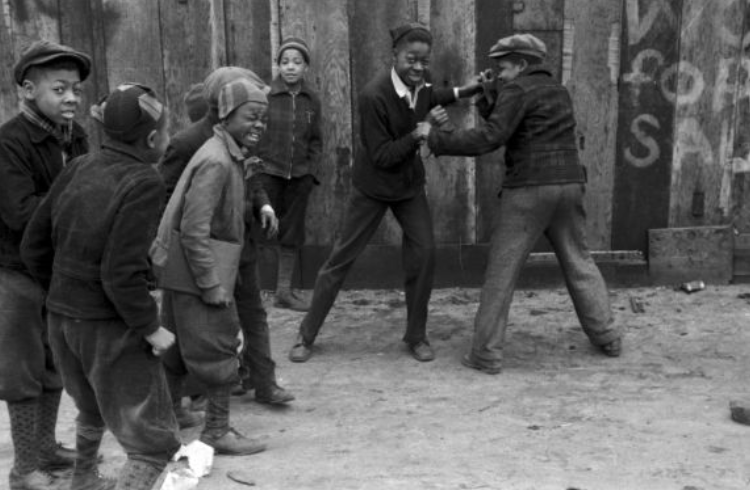
A pair of boys box in an alleyway in Black Bottom during the 1930s-1940s.–Credit: Walter P. Reuther Library, Archives of Labor and Urban Affairs, Wayne State University.
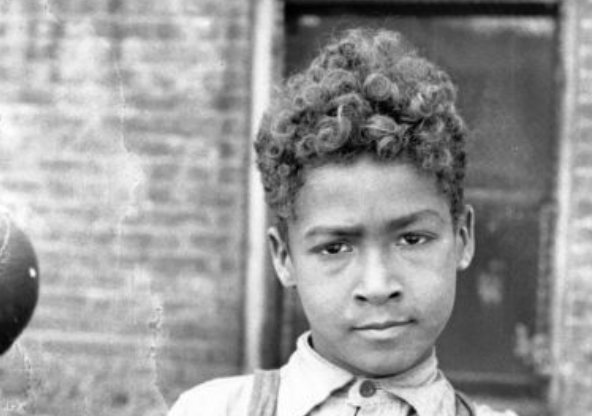
Portrait of a young boy in Black Bottom during the 1930s-1940s. Identified by a community member as being “Perry Lopez”.–Credit: Walter P. Reuther Library, Archives of Labor and Urban Affairs, Wayne State University.
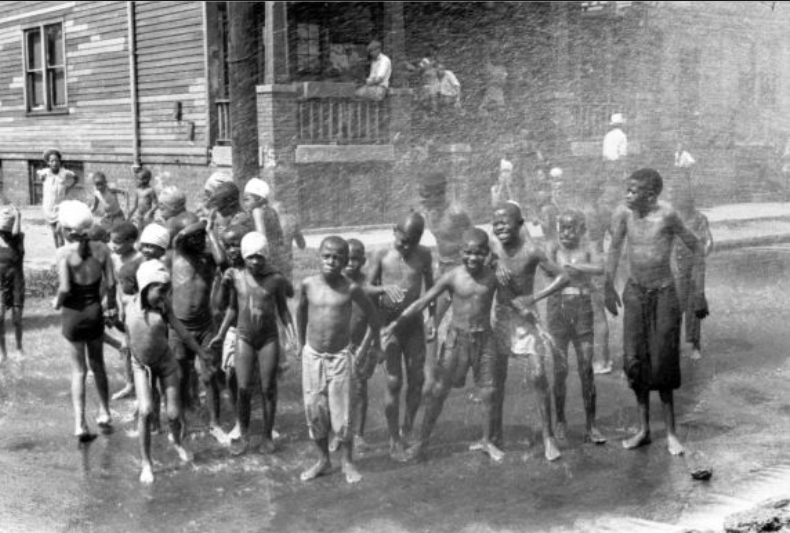
Children play in an opened fire hydrant on a warm summer’s day in Black Bottom, 1930-1940s.–Credit: Walter P. Reuther Library, Archives of Labor and Urban Affairs, Wayne State University.

Three boys pose in front of a five and dime store in Black Bottom, 1930-1940.–Credit: Walter P. Reuther Library, Archives of Labor and Urban Affairs, Wayne State University.
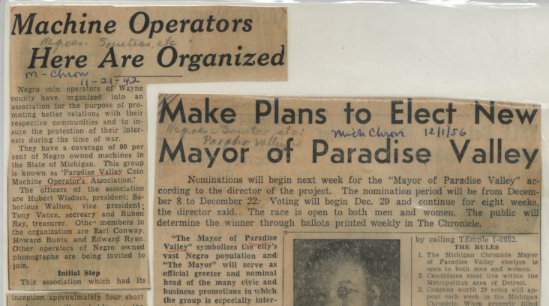
Two clippings from the Mighican Chronicle (1942, 1956) covering how Black communities in Paradise Valley organized for collective empowerment. –Credit: Walter P. Reuther Library, Archives of Labor and Urban Affairs, Wayne State University.
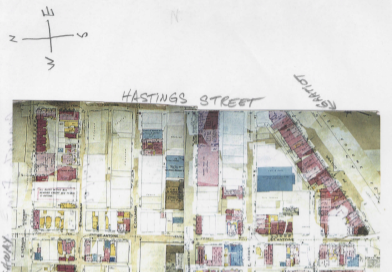
An undated map of the locations of African American organizations and societies in Paradise Valley, the central hub of Black life until its demolition in the late 1950s. –Credit: Walter P. Reuther Library, Archives of Labor and Urban Affairs, Wayne State University.
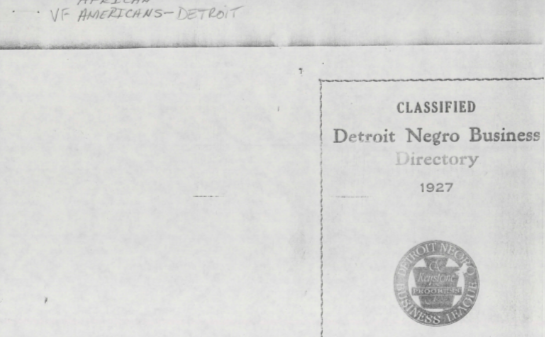
This directory published by the Detroit Negro Business League lists Black-owned businesses in the city, chiefly in Black Bottom and Paradise Valley. –Credit: Walter P. Reuther Library, Archives of Labor and Urban Affairs, Wayne State University.
Clip from a 1989 interview with Detroit resident Helen Kelly, in which she describes the impacts that urban renewal and highway construction had on the city’s Black community.–Credit: Henry Hampton Collection, Washington University Libraries
Clip from a 2018 interview with former City Councilwoman JoAnn Watson, in which she describes the Black communities that were destroyed when freeways were built through the heart of Detroit. –Videography: 248 Pencils
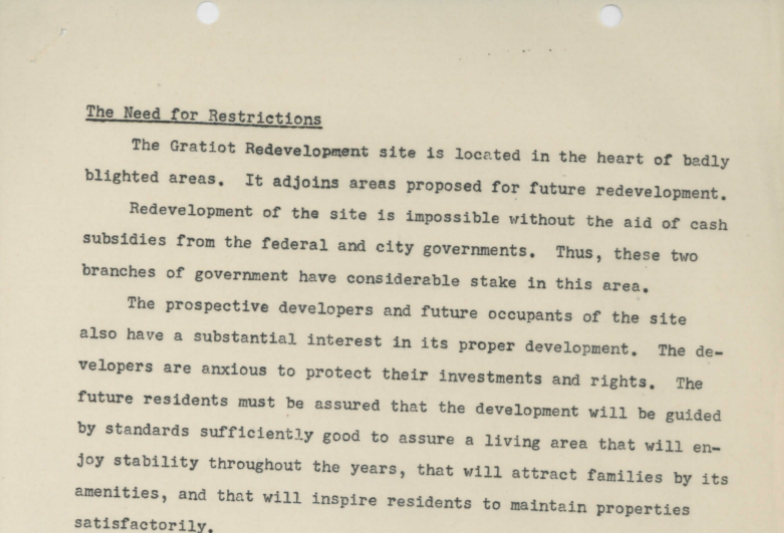
An undated report from the City Plan Commission on the Gratiot Redevelopment Site, which outlines restrictions of land use for the “redevelopment” of Black Bottom and Paradise Valley in the late 1950s.–Credit: Walter P. Reuther Library, Archives of Labor and Urban Affairs, Wayne State University.
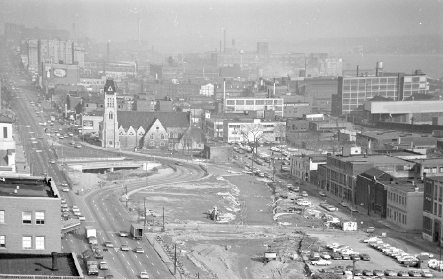
A view of the Chrysler Freeway construction project in Detroit, looking east from the roof of the City-County Building, 1964. –Credit: Walter P. Reuther Library, Archives of Labor and Urban Affairs, Wayne State University
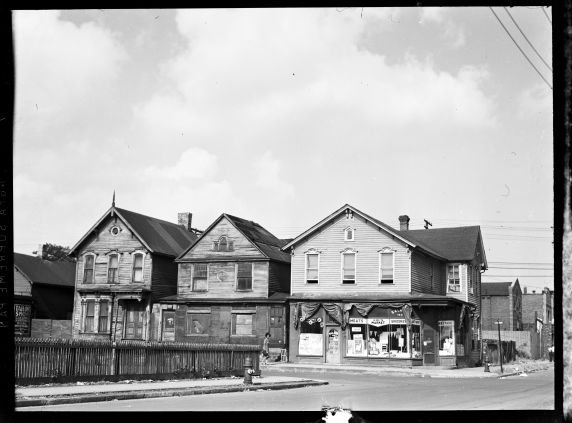
A photograph of St. Antoine Street at Winder in Detroit’s Black Bottom Neighborhood, taken in the 1930s or 40s.–Credit: Walter P. Reuther Library, Archives of Labor and Urban Affairs, Wayne State University.

Oral history interview with former residents of Detroit’s Black Bottom neighborhood, conducted by Elaine Latzman Moon between 1990-1994. –Credit: Walter P. Reuther Library, Archives of Labor and Urban Affairs, Wayne State University
